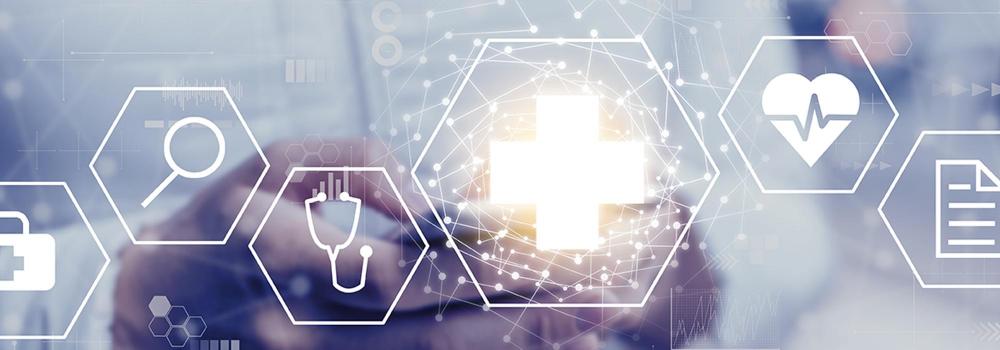An out-of-date healthcare facility monitoring system can wreak havoc on caregiving staff – and on your facility’s bottom line. Learn how to tell if your system needs an upgrade, and how automated solutions can transform your hospital or lab.
A key takeaway from 2020 is that healthcare facilities need to be prepared for disruptive events. As facility managers reflect on recent lessons learned, a top priority is to check in on the health of your facility monitoring system and assess the benefits of an upgrade.
The past months have put all facility systems to the test — from training and protocols, to healthcare and hospital technology. We’ve seen staff time overburdened and technology that fell short of demand. All of this experience presents the opportunity to identify areas for improvement and where to invest resources for future preparedness.
In this article, we’ll explore how to examine your current facility environmental monitoring system, and how to know if it’s time for an upgrade.
Is Your Facility Running on Efficiency?
Patient care improves when physician and staff time is freed up from administrative tasks and can focus on consultation, diagnosis and treatment. The bar for healthcare quality rises as hospital technology follows innovation to meet changing demands. When looking at potential new strategies and solutions, there are a few key indicators to determine if your facility can benefit from automated monitoring technology.
For starters, try to get a sense of the staff’s bandwidth monitoring and recording coded events or environmental changes consumes during the day. Ask your team.
- How much care provider time is spent on manual tasks that could be automated?
- Is staff manually checking environmental conditions such as isolation room pressure or medication storage area temperature?
- How are alerts and notifications of emergencies or special status communicated?
If staff is overextended managing conditions and communications, it may be time to adopt a new approach to your hospital technology and environmental monitoring system.
The Importance of Automated Environmental Monitoring
An outcome of the recent pandemic is a heightened focus on the importance of environmental monitoring in healthcare facilities. With the increased demand for isolation rooms and ICU beds, more restrictive visitor policies and additional protocols that tax caregiver time, the healthcare landscape is more resource-intensive than ever before. Facility managers can play an essential role in the overall quality of healthcare by implementing automated environmental monitoring systems and restoring the precious resource of time back into the hands of caregivers.
In times of increased and intensive healthcare demand, professionals focus on providing care with the resources available. For example, if a facility is monitoring differential pressure with ball-in-wall technology which requires visual verification at each location, caregivers will use that indicator for infection control measures. If vaccine storage requires a visual check to ensure temperature and humidity, staff time will be allocated.
Event documentation, emergency communications and protocol compliance reporting are all part of healthcare operations that consume staff time. However, given the context of a global health crisis and recent advances in hospital technology, healthcare facilities will need to turn to automated facility monitoring in order to run efficiently, retain staff and remain vital.
Taking Control of Facility Monitoring With OneVue
Digital solutions like Primex OneVue Monitor provide automated environmental monitoring that can gather data from a range of easy-to-install sensors and devices into a user-friendly platform. The solution works with OneVue Sense’s medical grade range of environmental sensors, including differential pressure sensors to replace those ball-in-the-wall units and temperature sensors specifically designed to monitor the storage of sensitive assets like samples and medication. Within the system, sensors can be installed throughout a hospital or healthcare facility to monitor temperature, humidity, water leaks, capacity and access of buildings and controlled rooms. The automation of tracking allows key staff to be alerted when a breach of any kind occurs, whether a change to conditions in a pressurized room or a jump in temperature or humidity of a storage area.
Primex OneVue can also help streamline communications throughout a healthcare facility, notifying special conditions or emergency situations. The OneVue Notify InfoBoard can help hospitals contain disease and control visitor access through visual displays. The displays are easily installed and provide fast, effective notifications that can be institution-wide or customized per location. As a connected device, the timeline of events is documented providing crucial information for reporting and for future improvements. Caregivers can also benefit from using OneVue Sync to record patient events, medication delivery, testing and other procedures. Sync helps improve the accuracy of documentation of coded events, personnel shift changes and support time-based billing and insurance disputes. With the additional assurance of OneVue Sync, crucial documentation of events is recorded and accurate.
Through environmental monitoring, data collection, reporting and effective communications, Primex OneVue helps healthcare facilities centralize information. This ability greatly reduces the burden on caregivers to manually monitor or document conditions and events. Conditions and events can be easily monitored from any device whether PC, tablet or phone. Connected to the OneVue Monitor, this information hub empowers managers, creates greater staff efficiency and allows teams to focus on strategies to improve operational efficiency and, most importantly, patient care.
Ready to learn how Primex can take your facility to the next level? Contact us today!
References
Lessons from CEOs : Healthcare Leaders Nationwide Respond to the Covid-19 Crisis
